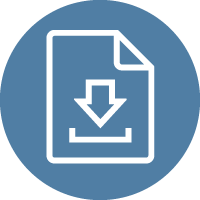
Patient Educational Resources
Effective Pain Medication Management: Strategies for Relief and Safety
Pain, whether acute or chronic, can significantly impact daily life, making effective pain medication management crucial for alleviating discomfort while ensuring safety and minimizing risks. This article explores various aspects of pain medication management, including types of pain medications, strategies for safe use, potential risks, and considerations for optimizing treatment outcomes.
Understanding Pain Medications
Pain medications, also known as analgesics, work by targeting pain receptors in the brain and nervous system to reduce the perception of pain. There are several types of pain medications commonly used, each with its specific mechanisms of action and indications:
- Nonsteroidal Anti-Inflammatory Drugs (NSAIDs): These medications, such as ibuprofen and naproxen, reduce inflammation and alleviate pain caused by conditions like arthritis, muscle strains, and menstrual cramps.
- Acetaminophen: Known for its pain-relieving and fever-reducing properties, acetaminophen is often used for mild to moderate pain relief and is considered safer for long-term use compared to NSAIDs.
- Opioids: Strong pain relievers, opioids like oxycodone, morphine, and codeine are prescribed for severe pain, such as after surgery or due to certain medical conditions. They work by binding to opioid receptors in the brain and spinal cord.
- Adjuvant Medications: These include medications originally developed for other purposes but found to be effective in treating certain types of pain. Examples include antidepressants, anticonvulsants, and muscle relaxants.
Strategies for Safe Pain Medication Use
- Follow Prescribed Guidelines: Always take medications as prescribed by your healthcare provider. Follow dosing instructions carefully, and do not exceed recommended doses unless directed by a healthcare professional.
- Communicate with Your Healthcare Provider: Inform your doctor about any other medications, supplements, or medical conditions you have, as they can affect how pain medications work or interact with each other.
- Monitor for Side Effects: Be aware of potential side effects such as nausea, dizziness, drowsiness, constipation, and allergic reactions. Report any adverse effects to your healthcare provider promptly.
- Avoid Alcohol and Other Substances: Alcohol and certain medications can interact with pain medications, increasing the risk of side effects or overdose. Avoid consuming alcohol while taking pain medications unless approved by your doctor.
- Consider Non-Pharmacological Approaches: Complement pain medication with non-pharmacological treatments such as physical therapy, acupuncture, massage therapy, heat or cold therapy, and mindfulness techniques to enhance pain relief and reduce reliance on medications.
Risks and Considerations
- Addiction and Dependence: Opioids, in particular, carry a risk of addiction and physical dependence if used improperly or for extended periods. It’s essential to use opioids cautiously and only as prescribed.
- Tolerance: Over time, the body may develop tolerance to certain pain medications, requiring higher doses to achieve the same pain relief. Regular reassessment by healthcare providers can help manage tolerance issues.
- Withdrawal: Abruptly stopping certain medications, especially opioids, can lead to withdrawal symptoms. Your doctor can provide guidance on tapering off medications safely if needed.
- Individual Factors: Responses to pain medications can vary widely among individuals due to factors such as genetics, age, weight, and overall health. Personalized treatment plans are crucial for optimizing pain management.
Optimizing Treatment Outcomes
- Regular Follow-ups: Schedule regular follow-up appointments with your healthcare provider to assess the effectiveness of treatment, adjust medications as needed, and address any concerns or changes in your condition.
- Education and Empowerment: Educate yourself about your medications, including their benefits, potential risks, and how to use them safely. Take an active role in managing your pain by asking questions and discussing treatment goals with your healthcare team.
- Holistic Approach: Incorporate lifestyle changes such as maintaining a healthy diet, staying physically active within your limits, managing stress, and getting adequate sleep to support overall well-being and pain management.
Effective pain medication management involves understanding the types of pain medications available, using them safely and responsibly, monitoring for side effects, and considering complementary approaches to enhance pain relief. By working closely with healthcare providers, staying informed, and adopting a holistic approach to pain management, individuals can achieve optimal relief while minimizing risks and improving quality of life. Remember, pain management is personalized, and finding the right balance of treatments requires collaboration between patients and healthcare professionals.




